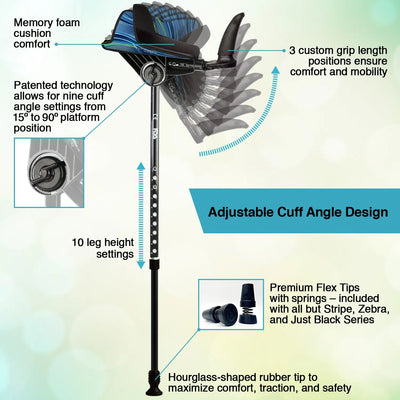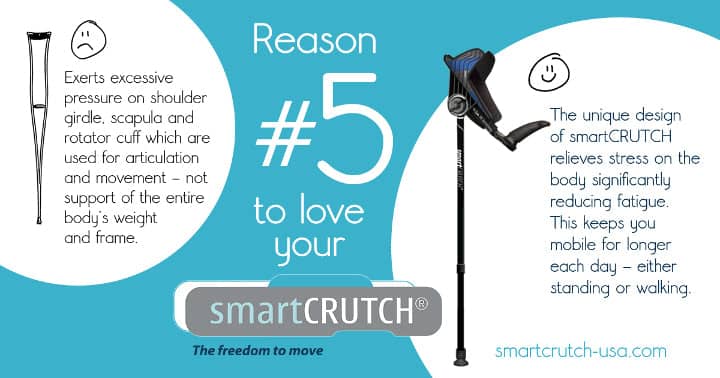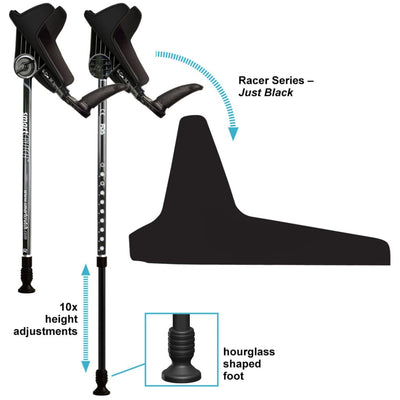The hardest part of using forearm crutches for the first time typically includes:
Balance and Coordination: Learning to balance your body weight while using the crutches can be tricky. Coordinating arm and leg movements to maintain stability requires practice.
Upper Body Strength: Forearm crutches rely heavily on upper body strength, particularly in the arms, shoulders, and core. For those who aren't used to this, fatigue or discomfort can set in quickly.
Weight Distribution: Figuring out how much weight to place on the crutches versus the affected leg(s) takes time. Putting too much weight on the crutches can strain the arms, while too little can compromise stability.
Proper Gait Pattern: Adopting the right gait pattern (two-point, three-point, or four-point gait) can feel unnatural at first. Learning to sync the crutch and leg movements can be challenging, especially for those recovering from an injury or surgery.
Grip and Comfort: Holding the crutches correctly while avoiding discomfort in the hands, wrists, and forearms takes some getting used to. Adjusting the crutches to the right height and using padded grips can help reduce discomfort, but it still requires practice.
Navigating Stairs and Uneven Surfaces: Stairs, slopes, and uneven surfaces can be particularly intimidating for beginners, as they require extra caution and technique to avoid falls.
With practice, people often adapt, but the initial adjustment phase can be challenging. Here is a good video with suggestions on using for the first time. smartCRUTCH...The Freedom to Move!







